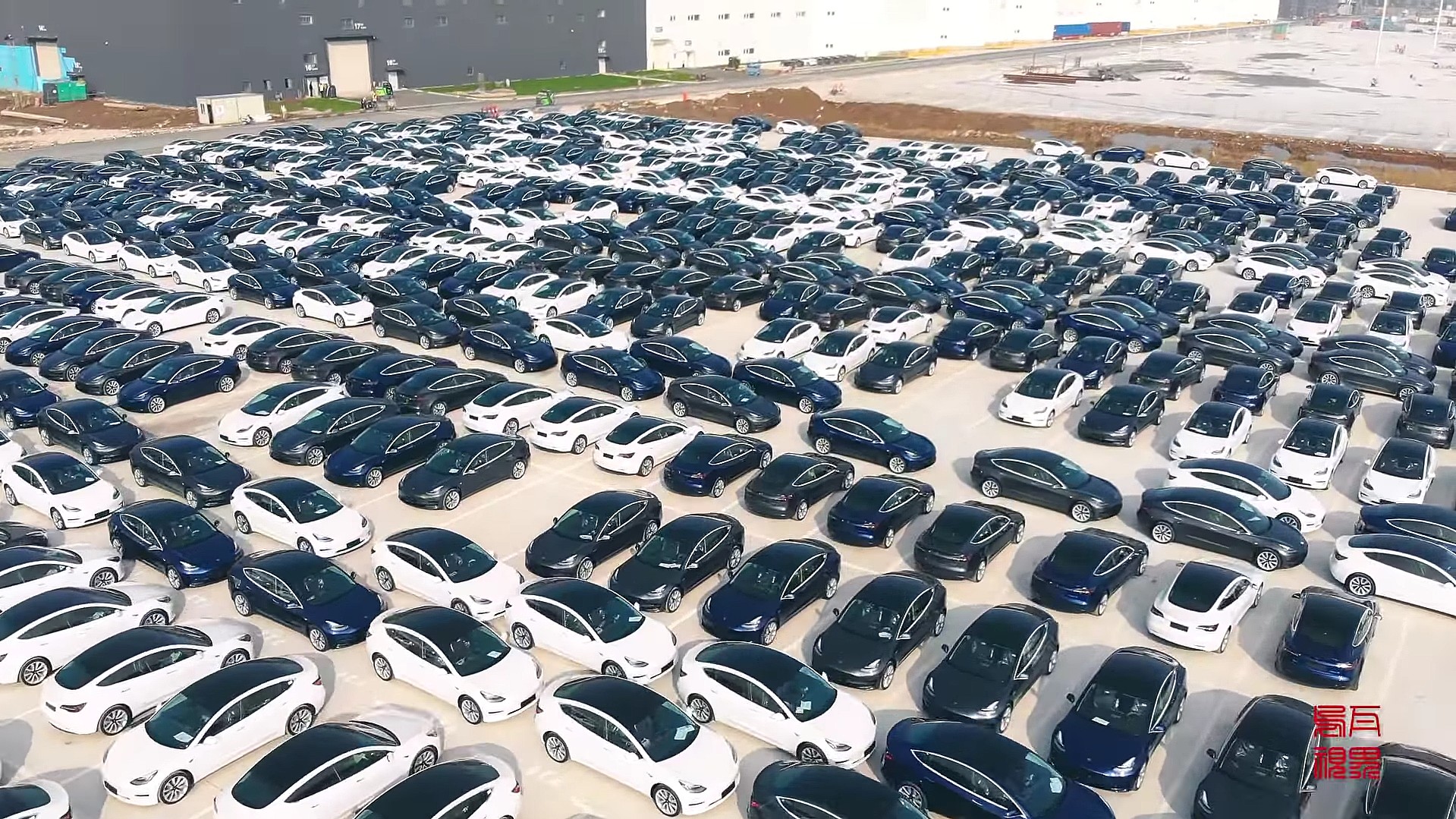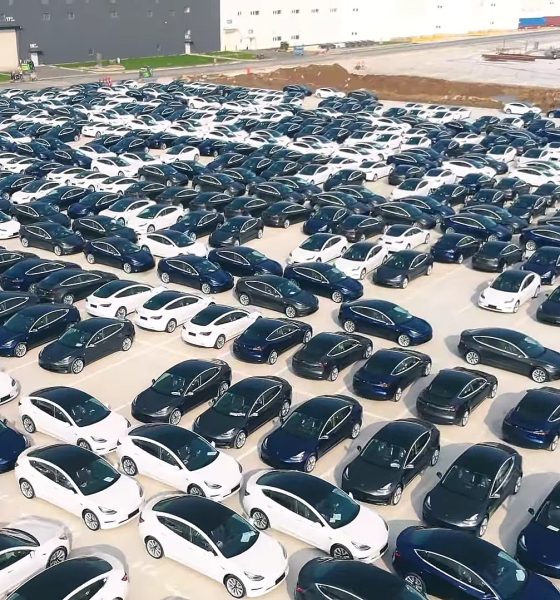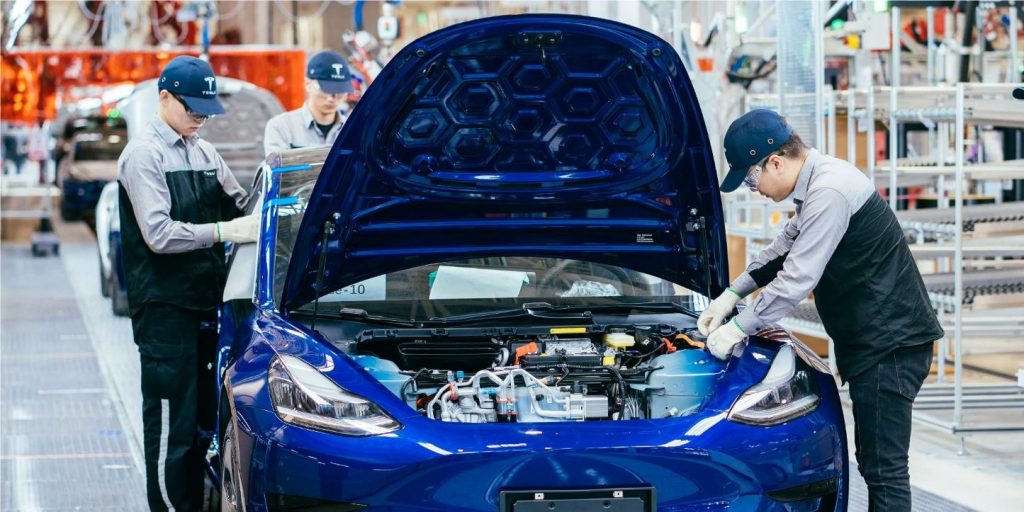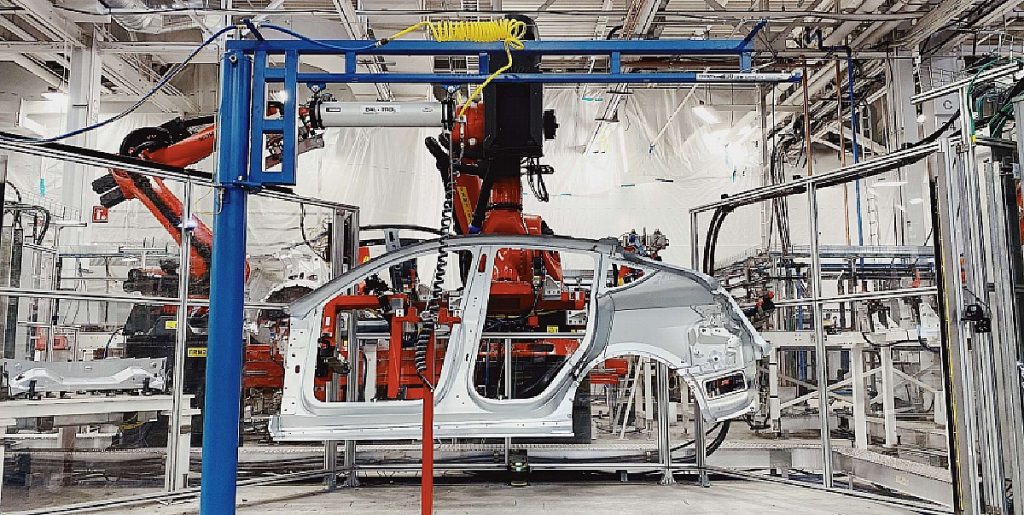

Investor's Corner
Tesla's capital raise unlocks a new chapter in the TSLA growth story
Tesla’s (NASDAQ:TSLA) recently-announced $2 billion capital raise may be surprising to some considering CEO Elon Musk’s statements during the company’s Q4 2019 earnings call, but the additional funding does point to one notion. Following this funding round, Tesla will have more cash than ever before, and this makes the company primed to go full speed into its upcoming high-profile initiatives.
It has been less than a year since Tesla last raised capital. Yet a lot of things have happened and a lot of things have changed since the company’s funding round in May 2019. While it could be argued that Tesla opted to raise money last year at a time when the company was at a low point, the electric car maker seems intent on increasing its cushion from a position of strength this time around.
Arguments about Elon Musk’s apparent opposition to a funding round aside, there are several compelling arguments for Tesla’s $2 billion capital raise. With this latest funding round, Tesla’s cash position would be at its highest in the company’s history at around $8 billion. That provides a lot of runway, and it’s probably enough to kickstart several high-profile projects.

Tesla’s press release about its new funding round was very understated, with the company merely stating that the additional capital will be used to “strengthen” its balance sheet. Tesla also noted that the funds would be used for “general corporate purposes.” These statements provide a pretty open interpretation of what the additional funding could be used for, though considering the company’s upcoming projects, it’s quite difficult to argue against Tesla’s additional funds at this stage.
The electric car maker, after all, has several high-profile projects that are ongoing. Giga Shanghai is reportedly on its second phase of construction, with the facility now being prepared for its eventual production of the Model Y crossover. Giga Berlin is set to break ground soon, and construction of Phase 1 is expected to commence soon after. The Model Y is also set to enter production fully, followed by the Semi later this year. The Cybertruck is also set to be produced next year, and perhaps the next-gen Roadster as well. A ramp of the Semi’s Megacharger Network is also yet to begin.

These are but part of the company’s projects for its electric car business. Tesla also intends to pursue a serious ramp of its energy division, propelled by its flagship Solarglass Roof tiles. The company’s battery storage products, such as the Megapack and Powerwall, are yet to be fully ramped as well.
Amidst all these initiatives, it is pertinent to note that for the longest time, Tesla was operating pretty much like a stereotypical Silicon Valley startup: cash-strapped at times and spending extremely frugally to survive. Yet with Model 3 demand proving consistent and more high-volume vehicles like the Model Y coming soon, the story seems to have changed for Tesla. This time around, the company is pursuing its trademark ambitious goals more equipped than before. This is quite an encouraging sign.
After all, a cash-strapped Tesla is what brought the Model S to the market, and that changed the very perception of what a premium sedan could be like. A cash strapped Tesla is also what created the Model 3, a vehicle so disruptive it is thriving at a time when sedans are a dying breed in a number of key markets. One can only imagine what a well-funded, well-equipped Tesla could do, especially when it’s about to release its most mainstream vehicles yet.
Disclosure: I have no ownership in shares of TSLA and have no plans to initiate any positions within 72 hours.

Investor's Corner
Tesla stock closes at all-time high on heels of Robotaxi progress

Tesla stock (NASDAQ: TSLA) closed at an all-time high on Tuesday, jumping over 3 percent during the day and finishing at $489.88.
The price beats the previous record close, which was $479.86.
Shares have had a crazy year, dipping more than 40 percent from the start of the year. The stock then started to recover once again around late April, when its price started to climb back up from the low $200 level.
This week, Tesla started to climb toward its highest levels ever, as it was revealed on Sunday that the company was testing driverless Robotaxis in Austin. The spike in value pushed the company’s valuation to $1.63 trillion.
Tesla Robotaxi goes driverless as Musk confirms Safety Monitor removal testing
It is the seventh-most valuable company on the market currently, trailing Nvidia, Apple, Alphabet (Google), Microsoft, Amazon, and Meta.
Shares closed up $14.57 today, up over 3 percent.
The stock has gone through a lot this year, as previously mentioned. Shares tumbled in Q1 due to CEO Elon Musk’s involvement with the Department of Government Efficiency (DOGE), which pulled his attention away from his companies and left a major overhang on their valuations.
However, things started to rebound halfway through the year, and as the government started to phase out the $7,500 tax credit, demand spiked as consumers tried to take advantage of it.
Q3 deliveries were the highest in company history, and Tesla responded to the loss of the tax credit with the launch of the Model 3 and Model Y Standard.
Additionally, analysts have announced high expectations this week for the company on Wall Street as Robotaxi continues to be the focus. With autonomy within Tesla’s sights, things are moving in the direction of Robotaxi being a major catalyst for growth on the Street in the coming year.
Elon Musk
Tesla needs to come through on this one Robotaxi metric, analyst says
“We think the key focus from here will be how fast Tesla can scale driverless operations (including if Tesla’s approach to software/hardware allows it to scale significantly faster than competitors, as the company has argued), and on profitability.”

Tesla needs to come through on this one Robotaxi metric, Mark Delaney of Goldman Sachs says.
Tesla is in the process of rolling out its Robotaxi platform to areas outside of Austin and the California Bay Area. It has plans to launch in five additional cities, including Houston, Dallas, Miami, Las Vegas, and Phoenix.
However, the company’s expansion is not what the focus needs to be, according to Delaney. It’s the speed of deployment.
The analyst said:
“We think the key focus from here will be how fast Tesla can scale driverless operations (including if Tesla’s approach to software/hardware allows it to scale significantly faster than competitors, as the company has argued), and on profitability.”
Profitability will come as the Robotaxi fleet expands. Making that money will be dependent on when Tesla can initiate rides in more areas, giving more customers access to the program.
There are some additional things that the company needs to make happen ahead of the major Robotaxi expansion, one of those things is launching driverless rides in Austin, the first city in which it launched the program.
This week, Tesla started testing driverless Robotaxi rides in Austin, as two different Model Y units were spotted with no occupants, a huge step in the company’s plans for the ride-sharing platform.
Tesla Robotaxi goes driverless as Musk confirms Safety Monitor removal testing
CEO Elon Musk has been hoping to remove Safety Monitors from Robotaxis in Austin for several months, first mentioning the plan to have them out by the end of 2025 in September. He confirmed on Sunday that Tesla had officially removed vehicle occupants and started testing truly unsupervised rides.
Although Safety Monitors in Austin have been sitting in the passenger’s seat, they have still had the ability to override things in case of an emergency. After all, the ultimate goal was safety and avoiding any accidents or injuries.
Goldman Sachs reiterated its ‘Neutral’ rating and its $400 price target. Delaney said, “Tesla is making progress with its autonomous technology,” and recent developments make it evident that this is true.
Investor's Corner
Tesla gets bold Robotaxi prediction from Wall Street firm
Last week, Andrew Percoco took over Tesla analysis for Morgan Stanley from Adam Jonas, who covered the stock for years. Percoco seems to be less optimistic and bullish on Tesla shares, while still being fair and balanced in his analysis.

Tesla (NASDAQ: TSLA) received a bold Robotaxi prediction from Morgan Stanley, which anticipates a dramatic increase in the size of the company’s autonomous ride-hailing suite in the coming years.
Last week, Andrew Percoco took over Tesla analysis for Morgan Stanley from Adam Jonas, who covered the stock for years. Percoco seems to be less optimistic and bullish on Tesla shares, while still being fair and balanced in his analysis.
Percoco dug into the Robotaxi fleet and its expansion in the coming years in his latest note, released on Tuesday. The firm expects Tesla to increase the Robotaxi fleet size to 1,000 vehicles in 2026. However, that’s small-scale compared to what they expect from Tesla in a decade.
Tesla expands Robotaxi app access once again, this time on a global scale
By 2035, Morgan Stanley believes there will be one million Robotaxis on the road across multiple cities, a major jump and a considerable fleet size. We assume this means the fleet of vehicles Tesla will operate internally, and not including passenger-owned vehicles that could be added through software updates.
He also listed three specific catalysts that investors should pay attention to, as these will represent the company being on track to achieve its Robotaxi dreams:
- Opening Robotaxi to the public without a Safety Monitor. Timing is unclear, but it appears that Tesla is getting closer by the day.
- Improvement in safety metrics without the Safety Monitor. Tesla’s ability to improve its safety metrics as it scales miles driven without the Safety Monitor is imperative as it looks to scale in new states and cities in 2026.
- Cybercab start of production, targeted for April 2026. Tesla’s Cybercab is a purpose-built vehicle (no steering wheel or pedals, only two seats) that is expected to be produced through its state-of-the-art unboxed manufacturing process, offering further cost reductions and thus accelerating adoption over time.
Robotaxi stands to be one of Tesla’s most significant revenue contributors, especially as the company plans to continue expanding its ride-hailing service across the world in the coming years.
Its current deployment strategy is controlled and conservative to avoid any drastic and potentially program-ruining incidents.
So far, the program, which is active in Austin and the California Bay Area, has been widely successful.








